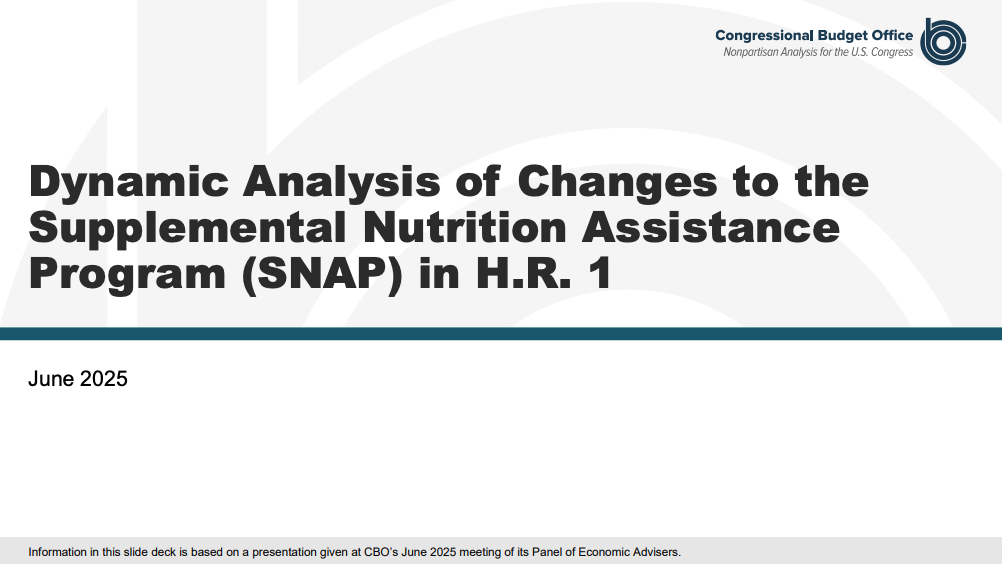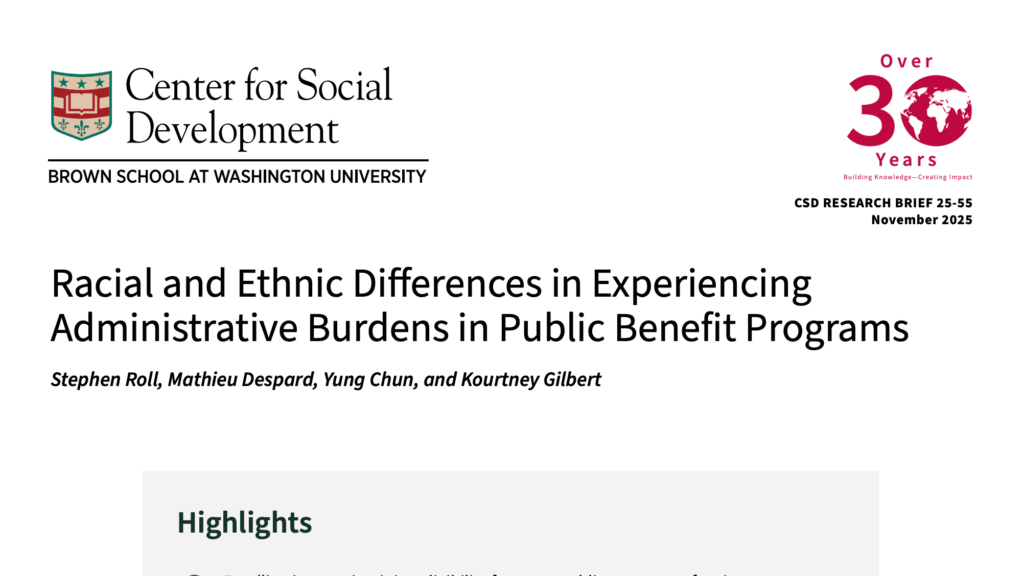Dynamic Analysis of Changes to the Supplemental Nutrition Assistance Program (SNAP) in H.R. 1
This slide deck describes the main mechanisms in a dynamic analysis of H.R. 1, explains the changes to SNAP, and explains the macroeconomic effects and budgetary feedback of those changes.

The report models the fiscal and macroeconomic impact of proposed SNAP changes—including new state cost-sharing requirements, expanded work rules, and benefit reductions—estimating a $287 billion decrease in federal spending and a $353 billion total deficit reduction over 2025–2034 when accounting for economic feedback.
It details how lower-income households would experience the largest income losses, how states might offset new costs through reduced spending in other programs such as Medicaid, and how labor supply would slightly increase as benefits decline. Overall, CBO projects that while SNAP benefit reductions may temporarily lower output, the combined fiscal effects could marginally increase private investment and long-term growth.
Share this Resource:


